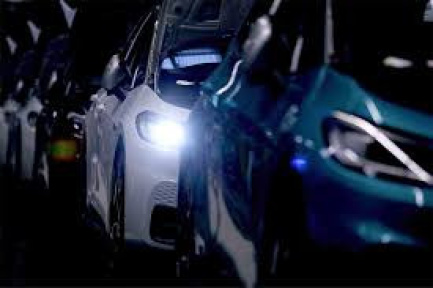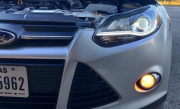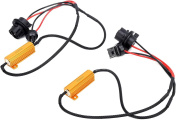
Key Takeaways:
- The Certified Automotive Parts Association (CAPA) is a non-profit, independent entity dedicated to certifying replacement auto parts to ensure quality and functionality.
- CAPA conducts comprehensive testing for headlights, including compliance to federal standards, illumination quality, durability, and more.
- It's advisable to check the authenticity on the CAPA website and not rely solely on brand names.
Not many car enthusiasts have heard of the CAPA certification for headlights and what it entails. Yet, CAPA certification is believed to be a very efficient way to let customers know of supreme quality. Only the best headlights can pass the CAPA certification process and receive the coveted seal of approval.
But what actually is CAPA and why does any of this matter? The Certified Automotive Parts Association oversees the testing and quality assessment of different car parts, including headlights.
The Association has become so highly regarded over the years that major brands pay thousands of dollars to get their products certified. It's like an industry badge of honor.
To us customers, seeing a CAPA seal on headlights means that whatever is in the box is made in compliance with safety and quality standards. Basically, these aftermarket headlights can be trusted.
During the rigorous testing process, CAPA experts assess headlights for material quality. This includes testing gaskets and adhesives to ensure the headlights will not let you down. CAPA examines their lifespan and resilience, verifies fitting accuracy in vehicles, and checks for any electromagnetic interference with other vehicle systems.

What Is CAPA Certification for Headlights?
If aftermarket replacement headlights have a CAPA seal, it means that they are a perfect equivalent to the original equipment. When you replace parts, you would ideally want them to match the OEM parts as closely as possible. That's why CAPA-certified headlights are so valuable.
When you buy such parts for your car, you get headlights compliant with every current safety standard and government regulation. Moreover, these headlights are perfectly compatible with your vehicle because they are practically the same as the original ones.
During the testing, the lights are assessed for safety, functionality, and durability. All three are important aspects of car headlights. They must provide consistent illumination without glaring or blinding other drivers. CAPA-certified headlights must be functionally equivalent to the OEM parts and also demonstrate resilience to the environment.
Are CAPA Certified Headlights Better?
Manufacturers certainly charge extra for CAPA-certified headlights, but is it worth it? In the case of headlights, it definitely is worth the money. When aftermarket headlights receive this certificate, it means they are of high quality, durable, and comply with the law and standards.
The certification process involves testing for compliance with Federal Motor Vehicle Safety Standard 108. And not only that, but size, dimensions, and even the beam pattern are accurately assessed. All of this guarantees that the aftermarket headlights will be perfectly compatible with the car, just like the original parts.
And their durability isn't just a marketing ploy. Actually, many insurance companies consider CAPA-approved parts as the best.
The additional price accounts for the extensive range of tests the product undergoes. It's a lot of work to assess every aspect of the headlight. But in the end, you receive guaranteed quality, which sometimes surpasses that of the original headlights.
Some headlights are quite expensive due to the technologies and types of bulbs used. It can be very frustrating if such a purchase turns out to be a disappointment. That's why CAPA certification exists, to ensure you get exactly what you pay for.
In the end, the decision is yours. If you want solid guarantees that the headlights will work for your car, be prepared to pay a little extra for that confidence.
What Is The Testing Protocol for CAPA Certified Headlights?
The testing for CAPA quality standards is stringent. Headlights must undergo a series of tests that evaluate their adherence to regulations and industry requirements. The end goal of all these tests is to ensure that CAPA-approved headlights aren't just good replacements for OEM headlights but are possibly superior.
If I had to summarize the protocol and its key steps, it would look like this:
- Headlights must be tested for compliance with industry standards and the Federal Motor Vehicle Safety Standard 108. This standard has crucial requirements for automotive lighting.
- Next up is compatibility. All dimensions, including size and beam pattern, must undergo assessments to ensure they perfectly match those of the original parts. This test is based on the Effective Projected Luminous Lens Area approach.
- Another crucial consideration is ensuring the headlights function at the same power levels without disruptions or malfunctions. Replacement headlights must integrate with the vehicle's current electrical system, no exceptions.
- The headlights are also tested for electromagnetic compatibility. They must not interfere or conflict with any other electronic system inside the vehicle.
- Brightness, color, and photometry, or light intensity, must be checked to ensure they meet the standards.
- CAPA experts evaluate the estimated lifespan based on the robustness and quality of materials. Everything matters to ensure the highest quality.
- Finally, what good are these tests if CAPA doesn't try to fit the bulbs into the actual vehicle? The vehicle test fit is an integral part of the assessment protocol.
This rigorous process has a single goal: to provide automotive professionals and regular car owners confidence in the quality, safety, and performance of CAPA-certified headlights.
Can CAPA Certification Protect Against Fraud?
Yes, CAPA certification can protect you from fraud and poor-quality headlights. If a product passes the certification, it indicates high quality. And the certification ensures that these headlights are compatible with your vehicle and will not damage it.
Another great aspect of CAPA is that they test headlights for compliance with industry standards. If you see their seal of approval, you can expect great performance for your money.
CAPA protects its reputation and designs its seals to be tamper-evident. If someone attempts to remove a seal from a product, it will be destroyed immediately. This prevents the seal from being transferred to a different product and sold as CAPA-certified.
They also make their seals difficult to forge. So, if you know what to look for, you can determine whether a product genuinely has a seal of quality.

How To Identify Real CAPA Certified Headlights?
CAPA is dedicated to protecting its reputation from fraud. They've implemented measures to ensure their seal of approval does not come off easily or end up on a non-CAPA-certified product.
5 Tips To Check Authenticity of CAPA-Certified Headlights
- The seal itself is protected by a special technology that makes any tampering evident. If someone tries to remove the seal, it will simply be destroyed, making transfer impossible.
- But what if someone duplicates the seal? That's not easily done either. To prevent forgery, the CAPA seal features a special barcode and a string of numbers on its two-part label. You can verify authenticity using this information.
- True CAPA-certified headlights can be cross-referenced with a database. Enter the number into the database to verify its legitimacy.
- Retailers usually provide proof of certification, but always inspect products upon arrival. Ideally, use the database for verification. However, sometimes even a visual inspection can offer insights.
- Carefully examine the part you've received. Look for indications of inferior quality or subpar materials. If anything seems amiss compared to the original, consult the database.
Remember, even reputable manufacturers and retailers can make mistakes.
What Parts Besides Headlights Can Get Certified By CAPA?
CAPA certifies not only headlights but many more aftermarket parts for vehicles. In a similar manner, the Association assesses the quality of materials and functionality before stamping its seal of approval onto anything. Here are some ideas of what CAPA usually tests and certifies.
|
Part Type |
Description |
|
Electronics |
Parts with active electronic devices like HID or LED components and those with motors. |
|
Metals |
Includes bezels to wheelhouses. Tested for adhesive integrity, coating performance, and dimensions. |
|
Plastic |
Parts like fascias and grilles. Tested for appearance, coating performance, and hardware. |
|
Nonwoven Fabrics |
For hood and fender liners. Tested for thickness, moisture absorption, and chemical resistance. |
|
Lighting |
Covers brake lights, taillamps, and sidemarkers. Evaluated for luminous lens area and illumination. |
|
Attachments |
Includes lighting to hood hinge brackets. Tested for dimensional inspection and welds. |
|
Bumpers |
Includes energy absorbers. Tested for positioning, strength of welds, and primer. |
|
Radiators |
Metal parts with plastic tanks. Assessed for dimensions, composition, and heat exchange. |
|
AC Condensers |
Heat exchangers in front of radiators. Tested for vibration, fit, and leak resistance. |
|
Mirrors |
Mirror assemblies evaluated for appearance, construction, and vehicle fit. |
|
Cameras |
Exterior rearview cameras tested for image quality, protection, and electromagnetic compatibility. |
|
Sensors |
Includes park distance control sensors. Evaluated for function, climate, fit, and compatibility. |
|
Glass |
Windshields assessed for compliance, dimensions, glazing features, and appearance. |
A CAPA Certified Headlights Database
You can find the CAPA-certified headlight database on the official CAPA website. This should be your primary source for any information about certificates and parts. I would not recommend you trust any other sources.
In this database, you can check the authenticity of your headlights and their certificate. But if you are just looking for headlights and want to get some directions, you can find a list of manufacturers who are certified or have been decertified.
Once you are there, you should have a part number because each certified part has a unique number on a sticker. Once you enter it, you can find information about the manufacturer, vehicle compatibility, comments, and the certification date.
What Is the Difference Between NSF and CAPA?
Both organizations provide certificates and research quality, but they differ in their focus. While CAPA works hard to assess the quality of materials used and compliance with specifications and standards, NSF is focused primarily on product development and manufacturing.
Both factors have a strong impact on the final quality of the product. However, the testing process differs dramatically from one to another. So they should not be mixed.








